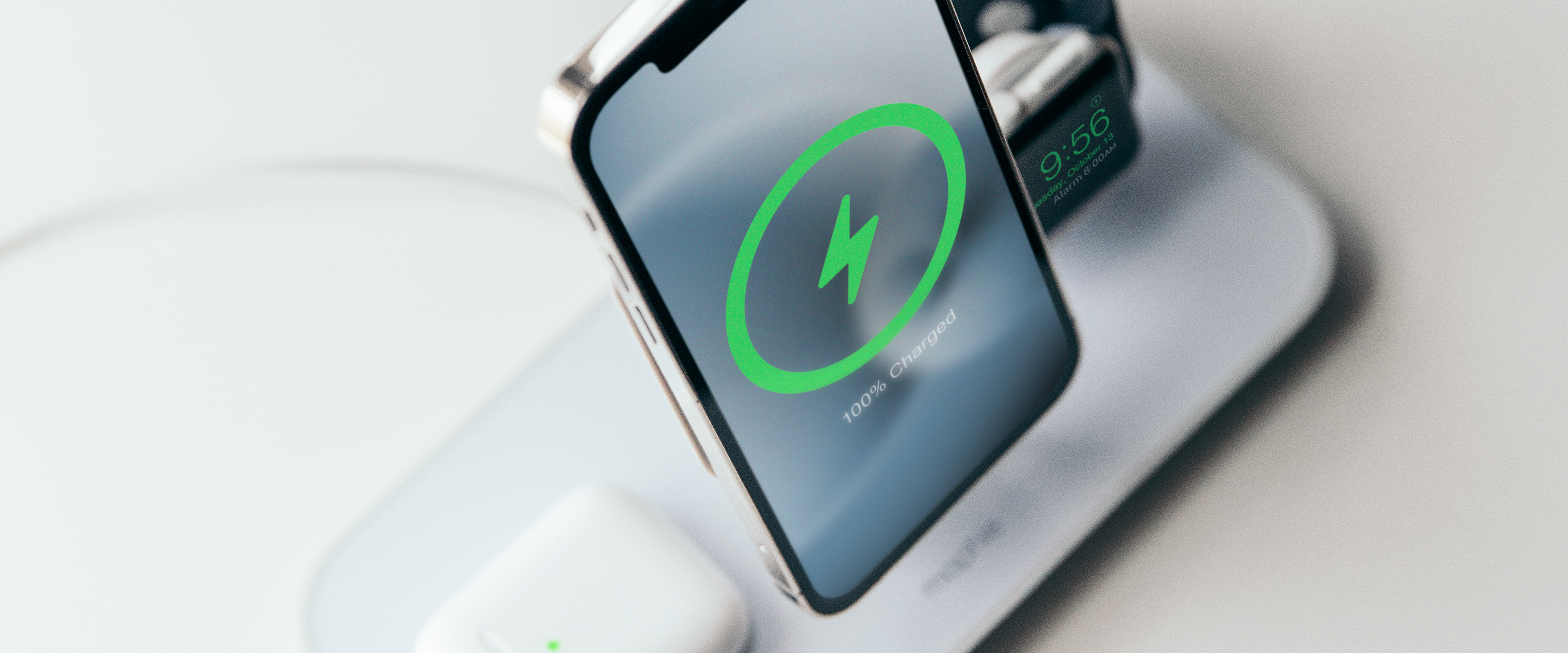MagSafe vs. Lightning Charging: 7 Key Differences

Their Differences Go Far Beyond Their Connectivity
Is MagSafe The Same As Wireless Charging?
MagSafe is a form of wireless charging, although it differs from standard methods in several important ways. It offers faster performance, delivering up to approximately 15W compared to the 5 to 10W range of typical Qi wireless chargers, resulting in quicker charging times. Its magnetic alignment system enhances convenience by snapping the device securely into place without requiring precise positioning and reducing the likelihood of accidental misalignment. MagSafe also functions as an accessory platform, enabling users to attach compatible items such as wallets, stands, or in-car mounts like Mophie’s magnetic vent mount, expanding its capabilities well beyond basic charging.
Lightning Charging vs. MagSafe: The Basics
The introduction of Lightning charging in 2012 marked a departure from the 30-pin connector that had been the standard for iPods, iPhones, and iPads for years. The reason? A desire to create a smaller, more durable, and more versatile connector. Lightning charging works by transmitting data and power through a small, rectangular connector with eight pins. These eight pins split into two sets, one for power and the other for data transfer. Thanks to the increased bandwidth, this eight-pin design allows for fast charging and data transfer.
MagSafe vs. Lightning: What’s The Difference?
Sure, one uses wires, and the other doesn’t. However, the differences between these two charging methods are much deeper than you might think. From MagSafe AirPods cases vs. Lightning to battery longevity concerns, we looked at the big picture so you don’t have to.
Speed
Is MagSafe faster than Lightning since it’s a newer invention? Not really. In fact, lightning charging is still faster than MagSafe, and USB-C offers even higher speeds. There are two key reasons for this disparity:
Direct Power Transfer: Lightning charging directly connects the power source to the device's battery, enabling continuous and efficient energy flow. On the other hand, MagSafe relies on electromagnetic induction, which involves converting energy and causing a slight loss of efficiency.
Higher Power Delivery: Lightning to USB-C offers 30W/480mbps, and Lightning to USB-A offers 12W/480mbps. The output offered by Lightning vs. MagSafe allows for faster power transfer and fast charging times.
Convenience
Speed might be a close race when comparing Lightning charging cases vs. MagSafe charging cases, but there’s a clear winner when it comes to convenience.
Easy Alignment: Close enough is good enough with MagSafe-compatible cases. The magnetic alignment is a key difference in MagSafe vs. Lightning, and the convenience of not having to fumble in the dark to plug in your phone is worth the price of admission alone.
Hands-Free: MagSafe lets you use your phone while charging wirelessly without even picking it up. This is great for power users who are constantly refreshing their email and social media feeds.
Note that the actual difference in MagSafe vs. Lightning charging times generally won’t be noticeable for most users. MagSafe chargers offer up to 15W of output, while standard Lightning to USB-A charges at 12W and Lightning to USB-C charges at 20W up to 30W. This translates to a difference of around 10 minutes when charging from 0 to 100%.
Additional Functions
MagSafe and Lightning differ in more than just charging. MagSafe accessories mainly work with iPhone, Apple Watch, and AirPods, such as wallets, car mounts, and multi-device chargers. Lightning accessories work with many devices, including monitors, adapters, headphones, hard drives, and speakers. MagSafe only supports wireless charging, while Lightning also allows fast data transfer for syncing, backups, and file sharing. Each system has different purposes, so the best choice depends on your devices and how you use them.
MagSafe vs. Lightning: Durability
Durability is a key consideration when comparing Lightning and MagSafe charging cases. Lightning connectors face inherent challenges due to their physical design: the small, exposed connector is susceptible to dust and debris, which can lead to charging issues or port damage even when using a robust case. MagSafe mitigates this concern through its wireless charging system, allowing users to place their phone on the charging pad repeatedly without risking wear or damage to the charging port.
MagSafe and The Future
MagSafe vs. Lightning charging might not even be a relevant issue for long. Consumers thinking about MagSafe vs. Lightning might overlook Apple’s growing emphasis on wireless charging. The iPhone 15 marked a notable transition to USB-C (mandated by the EU), but Apple also quietly upgraded the device to Qi2, allowing for faster charge speeds. This move, along with Apple’s decision to omit chargers or headphones with iPhone sales, point to a possible MagSafe-only future. Time will tell if Lightning will soon become a relic of the past.
What is MagSafe charging?
MagSafe charging is a wireless charging technology that utilizes magnets to create a secure and convenient connection between your iPhone and a charging pad. Instead of plugging in a cable, you simply hold your phone near the MagSafe charger to position it perfectly.
What is the difference between a Lightning charging case vs. a MagSafe charging case?
Differentiating MagSafe and Lightning cases is straightforward. Lightning cases rely on the iPhone’s bottom port, requiring a Lightning cable to charge the device, and are compatible with a wide range of Lightning-based chargers and accessories. MagSafe cases, in contrast, feature a built-in magnetic ring on the back, enabling them to attach directly to MagSafe chargers and accessories without cables, creating a more seamless charging experience. Functionally, the primary distinctions come down to convenience and speed: Lightning charging generally provides faster power delivery, whereas MagSafe prioritizes ease of use and magnetic alignment.
What kind of unique accessories can I use with MagSafe?
Accessories extend beyond basic charging, and the MagSafe ecosystem continues to grow with innovations from manufacturers like ZAGG, including the Snap magnetic system. MagSafe wallets attach magnetically to the back of an iPhone, providing a secure and convenient way to carry cards and cash. Portable chargers, such as MagSafe-compatible power banks, ensure your phone remains charged throughout the day; the Snap+ Juice Pack Mini Wallet exemplifies this by combining wallet functionality with portable power.
Car mounts designed for MagSafe maintain a secure hold on the device during travel, eliminating the need for constant realignment while navigating. While Lightning may offer faster charging, MagSafe accessories prioritize convenience and versatility, complementing a busy lifestyle.
Tags
MagSafe vs Lightning MagSafe Charging Lightning
Loading results...
